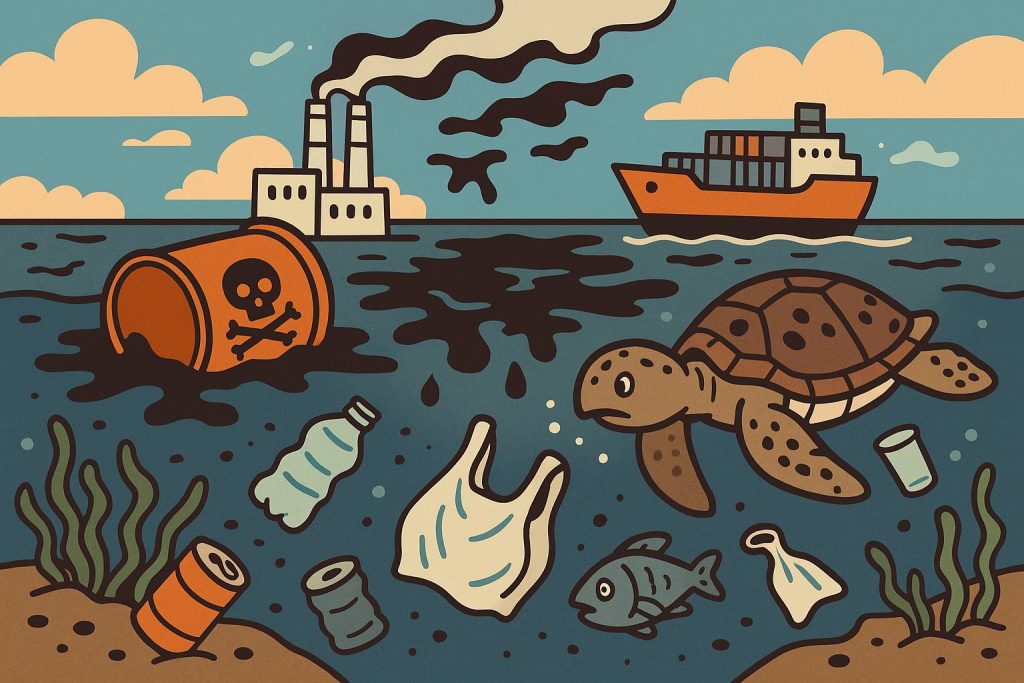Over the past century, human activity has transformed the world’s oceans from pristine ecosystems into dumping grounds for waste, plastic, and industrial byproducts. While the vastness of the ocean once seemed to promise endless capacity for absorption, science has shown that even the deepest trenches and most remote waters are now bearing the consequences of pollution.
The Rise of Industrial and Chemical Waste
In the early 20th century, the ocean was commonly viewed as a convenient disposal site. Industrial facilities, particularly in coastal areas, routinely discharged toxic waste, heavy metals, and chemicals directly into the sea. By the mid-1900s, the growing use of synthetic compounds—from fertilizers to pesticides—meant more chemical runoff entered rivers and eventually the ocean. One infamous example is mercury contamination, such as that which devastated marine life and human health in Japan’s Minamata Bay.
The Plastic Explosion
The invention of plastic in the 20th century revolutionized industry—but created a lasting environmental crisis. Since the 1950s, over 9 billion tons of plastic have been produced globally. A large portion of this plastic ends up in the ocean, where it breaks down into microplastics, infiltrating marine food webs from plankton to whales. Today, there are an estimated 170 trillion pieces of plastic in the world’s oceans, with more accumulating each year.
Oil Spills and Marine Transport
Major oil spills such as the Exxon Valdez (1989) and Deepwater Horizon (2010) highlighted the dangers of oil transport and offshore drilling. Beyond catastrophic events, daily shipping operations contribute ballast water pollution, leaking oils, and noise that disrupts marine life.
Eutrophication and Dead Zones
Agricultural expansion has led to excessive nutrient runoff—primarily nitrogen and phosphorus—into coastal waters. This causes eutrophication, where nutrient overloads trigger algal blooms. When the algae die and decompose, oxygen is consumed, creating dead zones where marine life cannot survive. One of the largest dead zones exists in the Gulf of Mexico.
Climate Change and Ocean Acidification
In addition to direct pollutants, carbon dioxide (CO₂) emissions are causing ocean acidification. Over the past 100 years, ocean acidity has increased by about 30%, affecting coral reefs, shellfish, and countless species that rely on calcium carbonate to build shells and skeletons.
Solutions and Hope
Despite the grim outlook, efforts to reverse ocean pollution are growing. Initiatives include:
- International treaties like MARPOL banning certain types of waste dumping
- Coastal clean-up campaigns and bans on single-use plastics
- Innovations in biodegradable materials
- Restoration of mangroves and wetlands that act as natural filters
Ultimately, reversing a century of damage requires coordinated global action, sustainable consumption, and stronger enforcement of marine protection laws.
Glossary
- Toxic waste — Harmful byproducts from industrial processes that are dangerous to living organisms.
- Synthetic compounds — Man-made chemicals, often non-biodegradable, used in various industries.
- Chemical runoff — Waterborne spread of agricultural or industrial chemicals into the environment.
- Microplastics — Tiny plastic particles formed when larger plastics break down.
- Ballast water — Water taken on by ships to maintain stability, often carrying invasive species or pollutants.
- Eutrophication — Excess nutrient accumulation in water, leading to low oxygen and loss of aquatic life.
- Dead zones — Areas in oceans or lakes with insufficient oxygen to support most marine life.
- Carbon dioxide (CO₂) — A greenhouse gas contributing to climate change and ocean acidification.
- Ocean acidification — The decrease in pH of seawater caused by absorption of CO₂ from the atmosphere.


